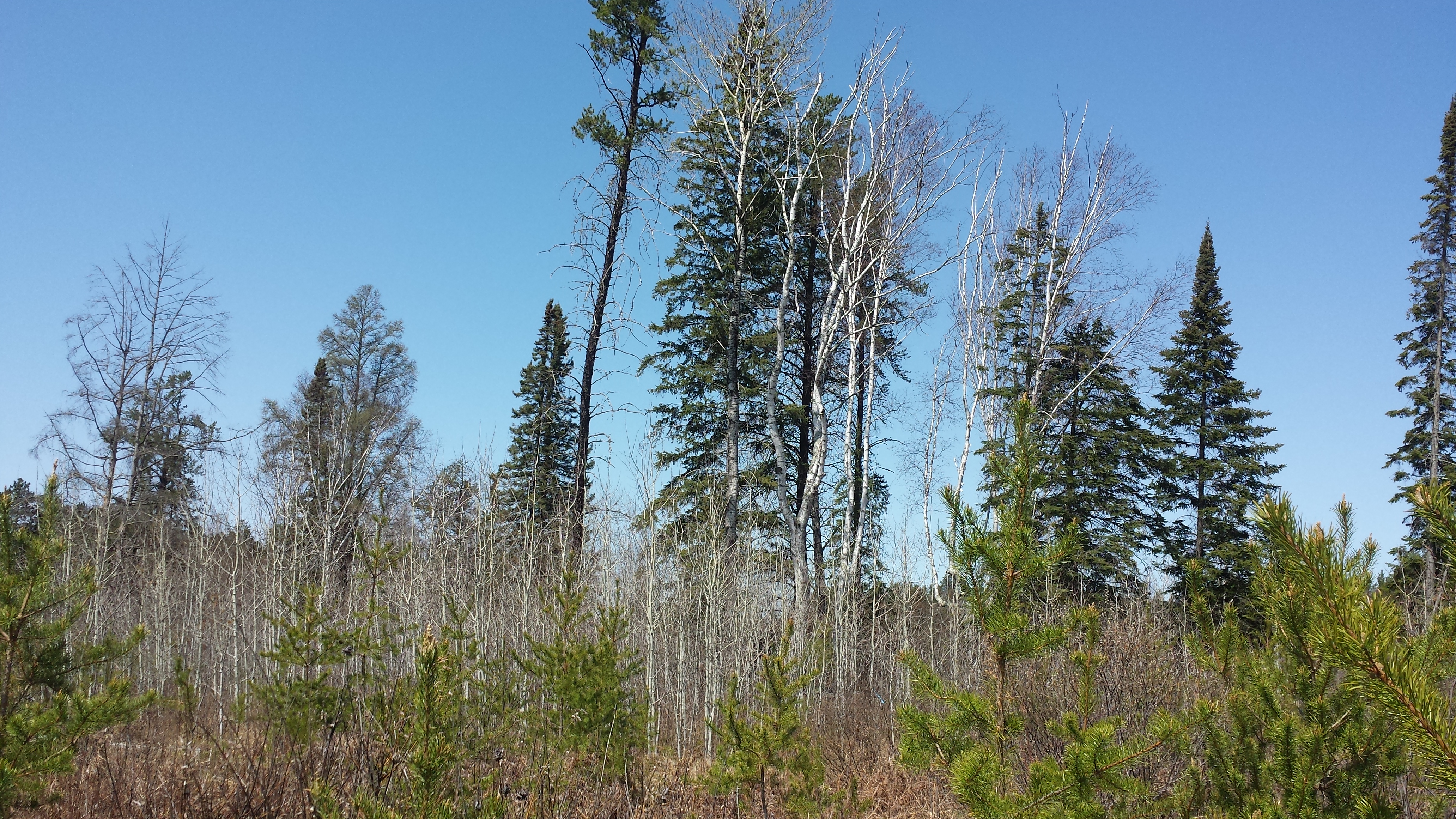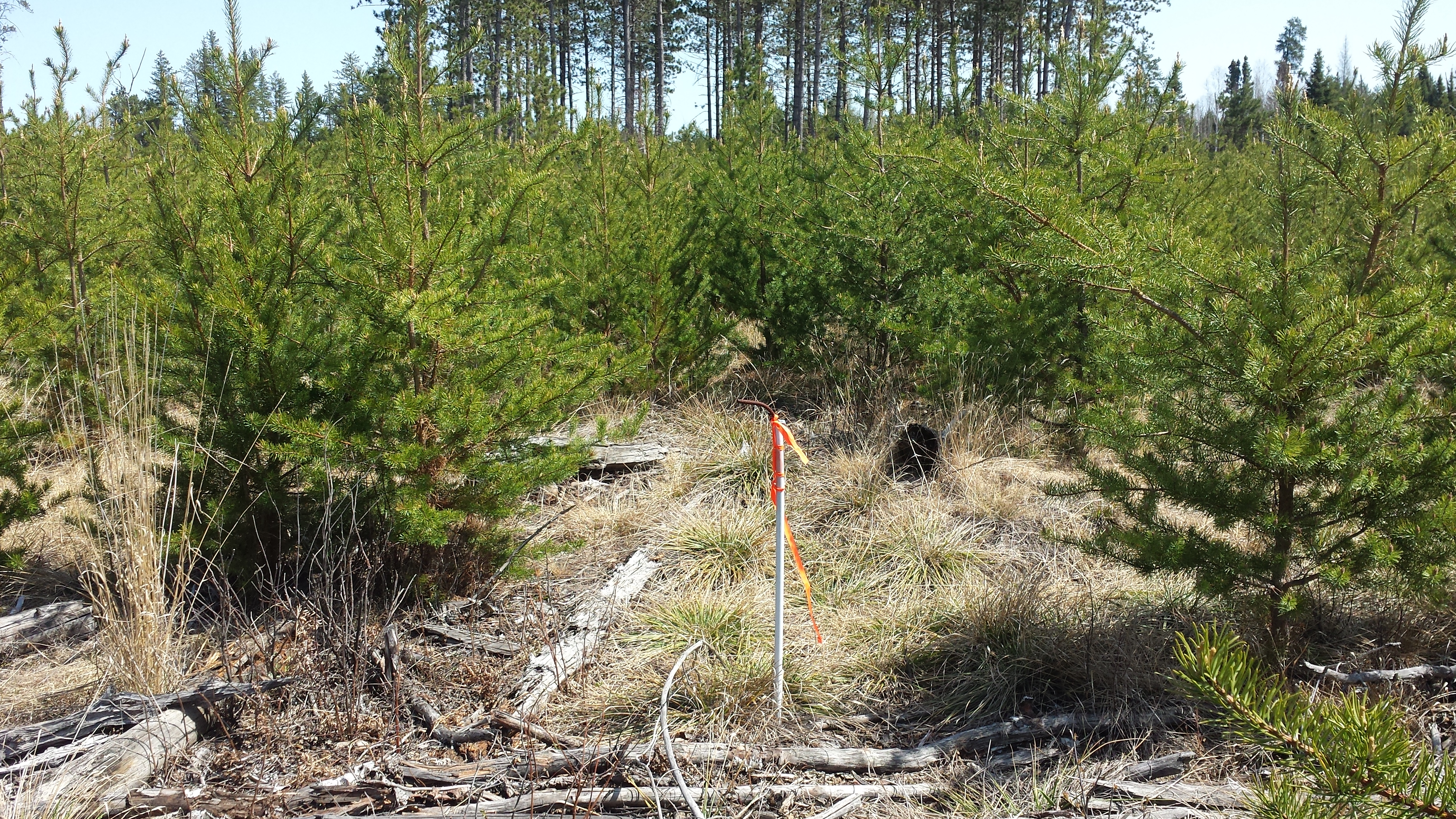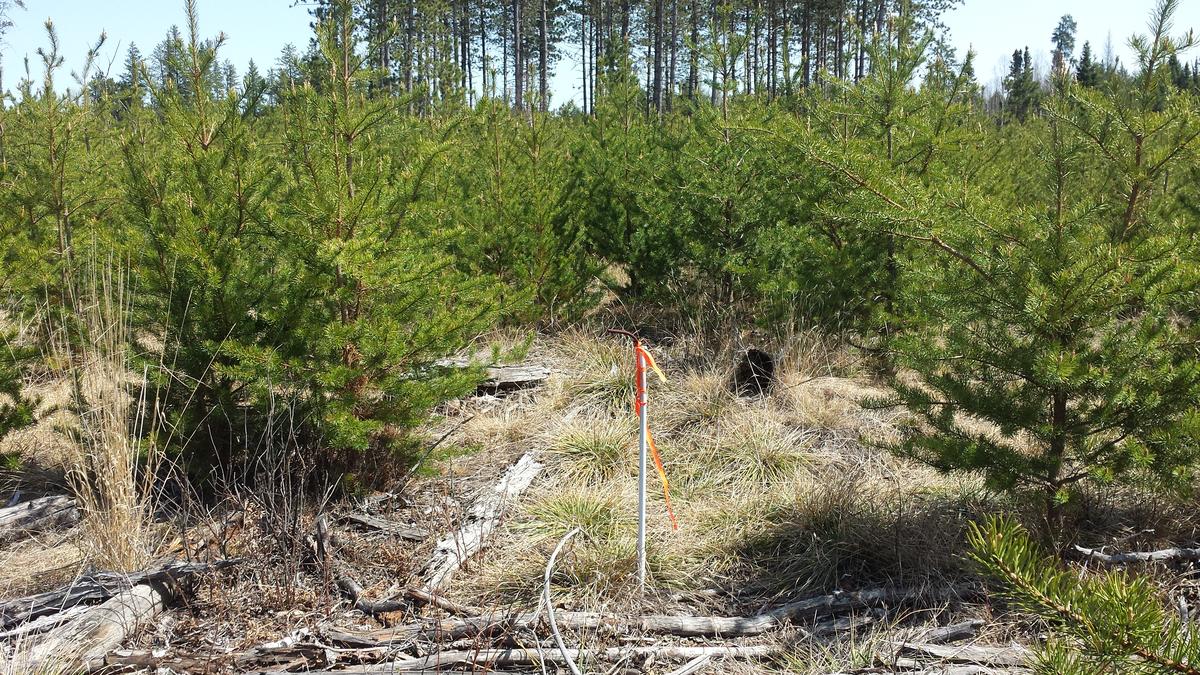Silviculture Objective(s)
Minimize Jack Pine mortality and maximize growth of jack pine for timber production.
Pre-treatment stand description and condition
Stand establishment and management history:
Harvested 73 acres Dec ’06 – Jan ‘07, aerial seeded May 2007. Harvested 47 acres in summer and fall of 2007 and aerial seeded at a rate of 2 oz. of Jack Pine seed per acre in May 2008.
Pre-treatment species composition:
Crop tree data: Jack pine (82%), Norway pine (5%), black spruce (84%) . Competition: cherry (60%), willow (48%), hazel (38%), aspen (20%), red maple (8%), raspberry (5%)
Pre-treatment growth and stocking:
84% stocking (crop trees), 2334 stems per acre, average height = 0.6 ft
Silviculture Prescription
Harvested area was approximately 115 acres in four units in one area, winter-harvest on Reserve stands are present throughout the area. Norway Pine over story was maintained south of Day Brook, harvested areas were aerial seeded the same fiscal year of the harvest.
Target stems per acre of pine = ~1000.
What actually happened during the treatment
Herbicide (Accord concentrate (1.5 qts per acre) was applied by helicopter to 115 acres as a release. Appeared to successfully kill hardwoods; jack pine were not injured. A few control plots were placed by University of Minnesota researchers (Pike, Warren at Cloquet Forestry Center) in two small reserves.

Figure 1: Wolf Lake jack pine - edge vegetation

Figure 2: Wolf Lake jack pine - treatment plot
Post-treatment assessment
In areas that were sprayed, stems per acres of jack pine were 2165. Control plots were more dominated by hardwoods in the distribution described earlier. Other than a few ‘skips’, the herbicide treatment was a success. The skips provide site diversity.
Plans for future treatments
Brush saw thinning of jack pine to a 7’X7’ spacing fall 2015. No future precommercial treatment planned. Stand will be evaluated in 15 years for possible commercial thinning. The income from a commercial thinning would recover almost double the cost of the precommercial thinning.
Costs and economic considerations
Timber income ~$230,000.
Expenses- Timber sale setup ~$3,000. Seeding $4180, Herbicide release $13,580 and brush saw spacing (yet to happen) ~$11,000. Total expenses $23,860
Profit of $206,140
Other notes
This was set up with funding from the Interagency Information Co-operative between 2011 and 2015. Data from plots is maintained at CFC and UMN-Forest Resources Department (St Paul).
Summary / lessons learned / additional thoughts
Sites were seeded at a lower rate 2 oz/ac rather than 4 oz/ac since we had cones left scattered over nearly all sites. Natural regeneration was successful, and stands are densely stocked (~2165 stems) with jack pine. Make sure slash is left on site for seed and ‘ground cover’ to avoid excessive soil drying. Winter harvest had branch breakage while summer harvest needed an even redistribution of slash. The winter cut biomassed site, using a cut to length operation, did produce more stems per acre than the winter cut, full tree skidding operation with slash back hauled.
